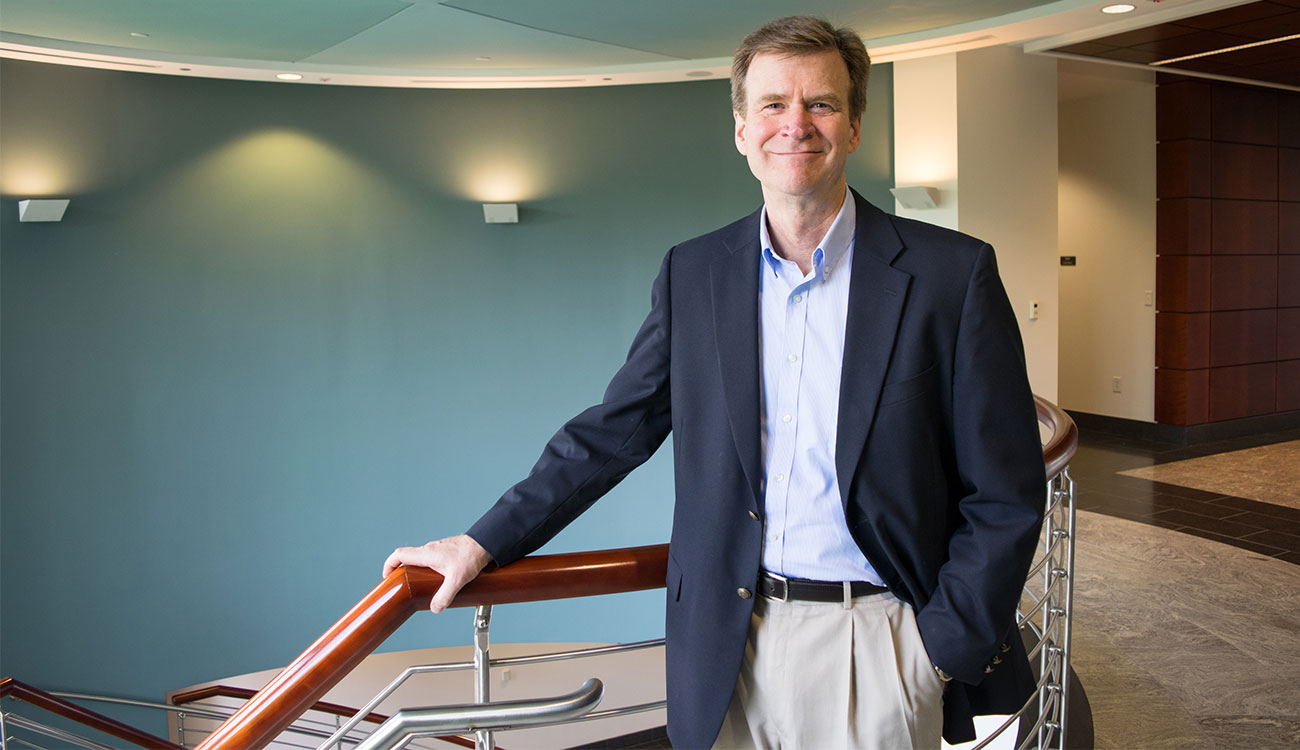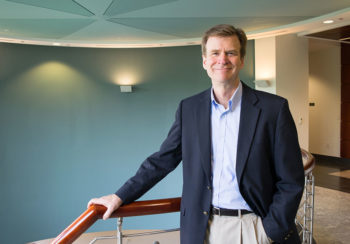In 2020, Professor Larry Hornak from the University of Georgia College of Engineering was appointed associate vice president in the Office of Research (OoR) with the responsibility of overseeing integrative team initiatives. Building on the momentum of the 2017 launch of UGA’s Presidential Interdisciplinary Seed Grant program and OoR’s existing Office for Proposal Enhancement, Hornak helped create more programs to incentivize, support and recognize team research that pulled together the talents of UGA faculty from multiple disciplines.
These programs range from funding support like the Presidential Interdisciplinary Seed Grant and the Teaming for Interdisciplinary Research Pre-Seed programs, to a workshop series for prospective team investigators, a robust proposal planning and review program for large projects, and more.
In this interview, Hornak discusses UGA’s strategic approach to facilitating integrative team research, the programs that are available for faculty to become involved in team projects, and the ultimate impact this type of work has on the world around us.
Why does it make strategic sense for UGA to offer support for team research projects?
There are many large and complicated problems that sponsors want to solve, and the problem doesn’t give a hoot about the disciplines it takes. It’s tackling the problem that matters. Solving those problems requires an interdisciplinary team approach, one that transcends and cuts across different boundaries and makes people work together to address the problem.
And we’re talking about problems like climate change, seasonal flu infection, sustainable transportation—grand challenges like that?
Yes, all of which people are very familiar with. If you pick any problem, there’s really a whole set of interconnected issues that contribute to it—and that must be addressed in a holistic way to solve it. People have heard about cybersecurity or cyber systems, quantum computing, things like that. Guess what? That’s not just a computer or computer chip—it’s a whole network of activity. They’re very cross-cutting, and if you don’t treat them holistically, you end up with solutions that may serve a particular function but don’t fit together to address the challenges of the whole system.
What have your priorities been as AVP for integrative team initiatives, and have they changed since you first stepped into the role?
I don’t know that they’ve necessarily changed, but perhaps they’ve evolved based on seeing what the needs were. I believe UGA faculty are very collaborative. They work together naturally. But this notion of leading larger teams and providing those team leaders and members with support—both in terms of professional development as well as financial support through seed programs—that’s been the focus. As well as providing support systems, things like project management support or red team review of their proposals.
Having world-class research is fundamental to large project competitiveness, but it is not enough. It needs to be integrated coherently, not only across disciplines, but also with workforce development, inclusivity, innovation and outreach activities to achieve the project’s vision. These can’t just be bolted on; they have to be really tightly knit and grown along with the world-class research from the very start. We’ve got to start working with faculty and their units really early—three years, five years in advance. If your goal is to go for one of these large, federally funded centers, whether it be NIH, NSF, USDA or DoD, then you have to be planning that far in advance and building the necessary foundational efforts and relationships.
With the Presidential Interdisciplinary Seed Grants, we’re having those projects work with something called the Toolbox Dialogue Initiative (TDI) at Michigan State University. Within the first couple months of their award, they work with them to form a firm foundation of what direction they’re going to go in and how it’s going to coalesce. In the 2023 seed grant round, we’re also requiring they plan a translation path for their work early on.
Seed grant recipients are encouraged to work with that program?
Yes. They must, actually. It’s in the solicitation. They will commit $4,000 of their award to do that. And there’s a method to this. That particular group is one of a handful nationally used by NSF and other federal agencies when they form big centers. So when our Presidential Interdisciplinary Seed Grant awardees subsequently submit larger proposals, we advise them, to make sure they mention that they’ve had this training. In doing so, they are increasing confidence on the part of the sponsor that an investing in a team is going to deliver—because many teams of complex projects fall short
Is there an order or an ideal arrangement of how these different types of support programs work together?
Well, first, people should know it’s not necessarily a linear process—if you get a pre-seed, you don’t necessarily go after a Presidential Interdisciplinary Seed Grant. What we’ve found is, because of that collaborative nature I mentioned, many times people who form a pre-seed may know somebody they collaborate with, one or two people, and then those people may collaborate separately with somebody else, so there is an opportunity for that original principal investigator (PI) to bring those two sub-teams together. We’ve found that often it’s not a bunch of individuals coming together, but rather pairs or groups of three. So you’re basically forming larger teams by connecting smaller teams.
Then what often happens is they get together, they have great conversations, and some subset of that group goes off and does something with even other folks. Again, it’s a living, dynamic thing. It grows in different directions.
“Having world-class research is fundamental to large project competitiveness, but it is not enough. It needs to be integrated coherently, not only across disciplines, but also with workforce development, inclusivity, innovation and outreach activities to achieve the project’s vision. These can’t just be bolted on; they have to be really tightly knit … from the very start.”
– Larry Hornak, Associate Vice President, Integrative Team Initiatives
Photo by Jason Thrasher
What are some misperceptions about UGA’s push into integrative team research?
We do hear things saying, “Well, we’re not emphasizing individual work anymore,” and that’s not true. We’re basically talking about helping that proverbial whole to be greater than the sum of its parts, which is what sponsors always seek with large teams. Usually the challenge for faculty is, “I want to do that, but I don’t want to lead it.” If we can provide the support for faculty to feel comfortable leading these projects, that’s going to create a lot more opportunity. For every effective leader we can help enable, there will be great faculty who would be willing to join them.
The Presidential Interdisciplinary Seed Grants and the pre-seed program have covered quite a bit on campus. What are some other programs or developments that are less well known?
One thing is the Research Training Support Group. Several of the federal agencies like NSF and NIH have training grants for supporting graduate students. These grants are critical to workforce development and also for faculty to competitively recruit the best students. The Research Training Support Group is a collaborative effort between the Office of Research, the Graduate School and the Office of Institutional Diversity. It’s a collaboration, because blending those three elements are key to any successful training grant. We know that faculty needed help to go after training grants, so we are trying to provide more up-front support for those types of activity.
What are the most common challenges faculty face when they’re trying to put a team together?
Probably most common is just being able to get people’s time. Faculty leaders need a compelling vision of what they’re trying to do, of what people will contribute for a proposal, and the bigger picture of what they’re trying to build. That helps attract team members, but the leader also has to put themselves in the shoes of the people they’re asking to join and find out what they’re interested in. That’s why the pre-seed program is so important; you get to know the people (if you don’t know them already) and what they value.
Any parting advice for faculty thinking about leading large team efforts?
Start early. Start with a working group and begin to build a core group of trusted individuals with whom you can share responsibilities. It’s a matter of shared value; you try to structure the team so that everybody’s getting value out. To achieve that shared value, develop a collaboration plan or team charter with your group. They go a long way towards building a firm foundation for a cohesive and resilient team. And don’t forget to reach out to us early to help!






